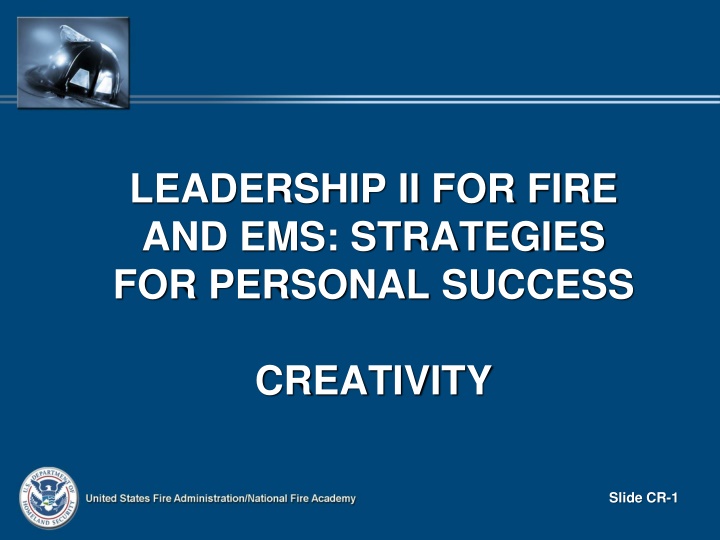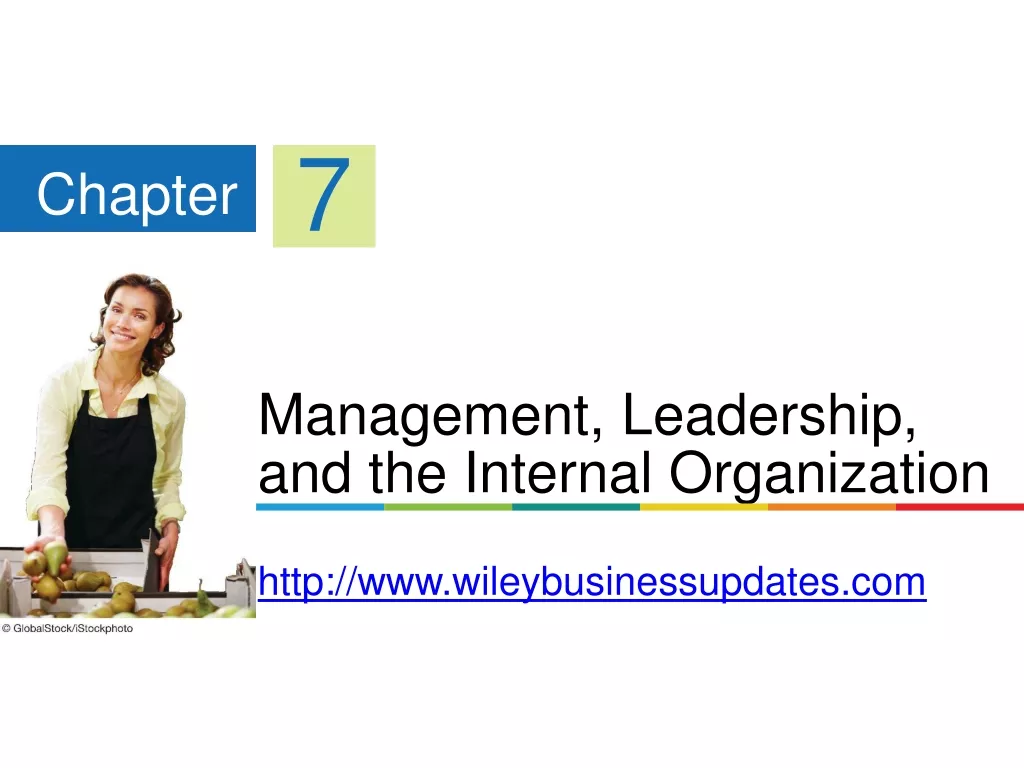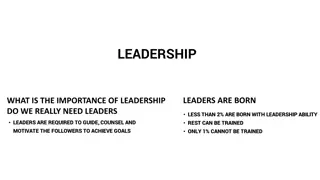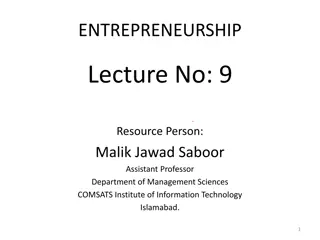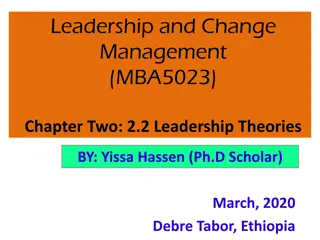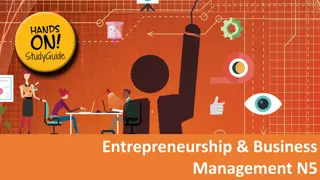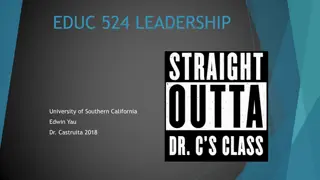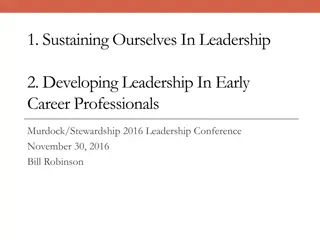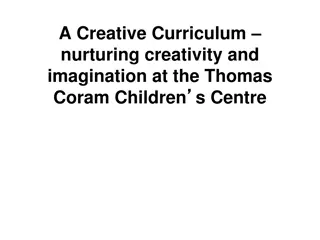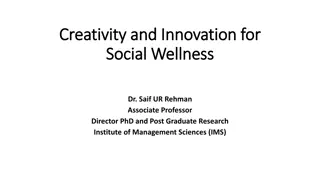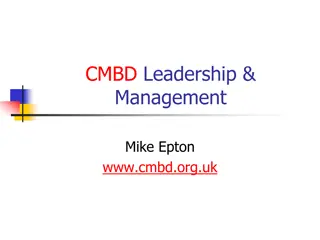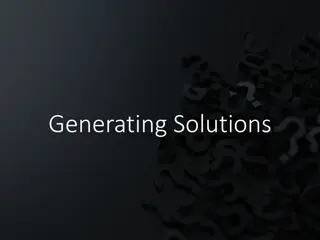Leadership Strategies for Personal Success and Creativity
This material explores the significance of creativity and innovation in fire and EMS organizations, providing insights on fostering creativity, overcoming blocks, and enhancing leadership traits. It covers defining creativity, analyzing the creative process, and selling new ideas effectively.
Download Presentation

Please find below an Image/Link to download the presentation.
The content on the website is provided AS IS for your information and personal use only. It may not be sold, licensed, or shared on other websites without obtaining consent from the author.If you encounter any issues during the download, it is possible that the publisher has removed the file from their server.
You are allowed to download the files provided on this website for personal or commercial use, subject to the condition that they are used lawfully. All files are the property of their respective owners.
The content on the website is provided AS IS for your information and personal use only. It may not be sold, licensed, or shared on other websites without obtaining consent from the author.
E N D
Presentation Transcript
LEADERSHIP II FOR FIRE AND EMS: STRATEGIES FOR PERSONAL SUCCESS CREATIVITY Slide CR-1
OBJECTIVES The students will: Define creativity and innovation. Identify the importance of creativity and innovation in fire/emergency medical services (EMS) organizations. Analyze the elements of creativity. Identify the five steps of the creative process. Slide CR-2
OBJECTIVES (cont'd) Evaluate personal blocks to creativity. Identify ways of fostering creativity in subordinates. Identify effective techniques for selling new ideas. Develop strategies to enhance creative leadership traits. Slide CR-3
OVERVIEW Icebreakers What is Creativity? What is Innovation? Why are They Important? Elements of Creativity The Creative Process Creativity Blocks Fostering Creativity in Subordinates Selling Your Ideas to Top Management Self-Assessment and Personal Improvement Strategies Slide CR-4
ICEBREAKER 1 Have a blank piece of paper ready Write down the answers to each of the following questions. Slide CR-5
ICEBREAKER 2 How many squares are in this figure? Slide CR-6
WHAT IS CREATIVITY? WHAT IS INNOVATION? WHY ARE THEY IMPORTANT? Slide CR-7
DEFINITIONS Creativity--ability to produce original ideas Innovation--ability to improve a present practice, method, or product Slide CR-8
Do creativity and innovation belong in the business world? Slide CR-9
ABSOLUTELY! Slide CR-10
Do creativity and innovation have a place at the Company Officer's (CO's) level? Slide CR-11
How many in the room know of a device or idea that came from a firefighter/emergency medical technician (EMT) that makes work easier or better? Slide CR-12
Why is it important to foster creativity in fire service/EMS organization? Slide CR-13
What are some examples of innovations which have reduced cost or increased productivity? Slide CR-14
What are some examples of how the fire service/EMS has adapted private sector practices to the public sector? Slide CR-15
DEBUNKING PREVALENT MYTHS Myth 1: The more intelligent you are, the more creative you are. Reality: Creativity is not a function of intelligence. Creativity is seeing what everyone else has seen and thinking what no one else has thought. Slide CR-16
DEBUNKING PREVALENT MYTHS (cont'd) Myth 2: People are born creative; creativity cannot be learned. Reality: It's true. People are born creative--that is, all of us are. But we can acquire skills to help us achieve our creative potential. Creativity can be learned, much as tennis and piano can be learned. Do you remember the first time you ever tried to ride a bicycle? Slide CR-17
DEBUNKING PREVALENT MYTHS (cont'd) Myth 3: Creative ideas come in a flash, like lightening bolts. Reality: Persistence and concentration are keys to creativity. You can't plant a garden until you have prepared the soil. Slide CR-18
DEBUNKING PREVALENT MYTHS (cont'd) Myth 4: Creativity is disruptive to the day-to-day life of an organization. Reality: Successful organizations are really two parallel, mutually supportive organizations--one innovative, one routine. Remember that every routine was once an innovation. Slide CR-19
DEBUNKING PREVALENT MYTHS (cont'd) Myth 5: Creativity is a luxury; it should be encouraged only in times of abundance. Reality: When you don't have money to throw at a problem you need to be more creative. Necessity is the mother of invention. Slide CR-20
DEBUNKING PREVALENT MYTHS (cont'd) Myth 6: True creativity is found primarily in the arts and has little practical business application. Reality: According to Princeton's Creative Research, Inc., 80 percent of corporate sales are from products developed or modified within the last 20 years. Forty percent of the gross national product is attributable to research and development during the past 25 years. Slide CR-21
ELEMENTS OF CREATIVITY Element 1: Fluency Quantity of ideas More ideas--more potential Average number of responses in a four minute period is around 22 Typical range is from 8 to 32 Slide CR-22
ELEMENTS OF CREATIVITY (cont'd) Element 2: Flexibility Let go of preconceived categories Break through mental barriers Generate ideas in different categories Practice free association Slide CR-23
12 11 1 10 2 9 3 4 8 5 7 6 Slide CR-25
ELEMENTS OF CREATIVITY (cont'd) Element 3: Originality Generate unusual ideas Fewer times it appears, more original idea is Slide CR-26
ELEMENTS OF CREATIVITY (cont'd) Element 4: Awareness See with your mind and imagination as well as your eyes See possibilities, not just reality Slide CR-27
What are some examples of awareness? Slide CR-28
ELEMENTS OF CREATIVITY (cont'd) Element 5: Drive Willingness to try and try again Refusal to give up Slide CR-29
THE CREATIVE PROCESS Where new ideas come from--someone suddenly discovers: New combination of existing ideas Adaptation of existing ideas Slide CR-30
THE CREATIVE PROCESS (cont'd) Steps leading to new ideas: Preparation Initial awareness of need/potential for improvement Scoping out of situation Laying groundwork for creativity Similar to problem identification phase, but more intuitive and less logical Mental definition of your purpose Slide CR-31
Does this ever happen to you on the job in your department? Slide CR-32
THE CREATIVE PROCESS (cont'd) Concentration Become absorbed in generating ideas Incubation When ideas run out, leave it alone for awhile. Sleep on it! Slide CR-33
THE CREATIVE PROCESS (cont'd) Illumination The "light bulb" goes on The "AHA" phase--getting the answer Feeling or a hunch Verification/Production Testing the idea Talking about the idea with others Trying out the solution to see if it works Slide CR-34
THE CREATIVE PROCESS (cont'd) The S-C-A-M-P-E-R technique Step 2 can be enhanced by asking certain questions. Questions are designed to stimulate fluency and flexibility of ideas. Slide CR-35
THE CREATIVE PROCESS (cont'd) S C A M What can you substitute? What can you combine? What can you adapt? What can you magnify, miniaturize, or multiply? What can you put to other uses? What else? Who else? Where else? Can you rearrange or reverse? P E R Slide CR-36
CREATIVITY BLOCKS "I don't want to look foolish." Don't want to be made fun of. Looking foolish might undermine professional image. Need to risk being teased. Slide CR-37
CREATIVITY BLOCKS (cont'd) "I don't want to fail." View as way to success. We learn from mistakes. A mistake is when we only miss the mark--failure is when we stop trying. Slide CR-38
CREATIVITY BLOCKS (cont'd) "I'm not creative." Lack of positive self-image. Major difference between creative and noncreative is self-confidence. Slide CR-39
CREATIVITY BLOCKS (cont'd) "That's not my area (skill, style, etc.)." Overemphasis on specialization limits creativity. Building safe "boxes" around ourselves. "Open up" new situations, challenges, opportunities. Slide CR-40
CREATIVITY BLOCKS (cont'd) "I don't get paid to have fun." Tendency to believe that having fun is the opposite of work. Finding ways to make your job fun (enjoyable) makes you a better employee. Channel play into constructive areas. Slide CR-41
FOSTERING CREATIVITY IN SUBORDINATES What are some examples of "killer phrases" you've encountered? Slide CR-42
"It's great--but" "Who asked you?" "It's too risky." "Be sensible." "What are you, some kind of nut?" "Why do it now?" "The chief will laugh." "We tried that before." "So what else is new?" "What do you know, you're just a rookie." Slide CR-43
FOSTERING CREATIVITY IN SUBORDINATES (cont'd) What kinds of things do supervisors do to discourage risk-tasking by subordinates? Slide CR-44
FOSTERING CREATIVITY IN SUBORDINATES (cont'd) Don't stifle innovative subordinates Be suspicious Be inaccessible Pass the buck Criticize at every opportunity Discourage people from letting you know when there's a problem Slide CR-45
FOSTERING CREATIVITY IN SUBORDINATES (cont'd) Control everything carefully. Make significant policy changes in secret. Keep people in the dark as much as possible. Pass on your dirty work in the name of delegation and participation. As the supervisor, you know everything there is to know. Slide CR-46
FOSTERING CREATIVITY IN SUBORDINATES (cont'd) What are some examples of behaviors or attitudes that foster creativity? Slide CR-47
FOSTERING CREATIVITY IN SUBORDINATES (cont'd) Characteristics of supervisors who foster creativity Willing to absorb risks taken by subordinates Comfortable with half-developed ideas Able to make quick decisions Good listeners Don't dwell on past mistakes Enjoy their jobs Expect subordinates to succeed Capitalize on subordinate strengths Slide CR-48
SELLING YOUR IDEAS TO TOP MANAGEMENT Have you ever made a suggestion to your boss you really believed had potential for improving the department but the boss refused to try it out? Slide CR-49
SELLING YOUR IDEAS TO TOP MANAGEMENT (cont'd) Assessing the "sell-ability" of your idea: Will it work? Has it been tested? Is it practical? Is it distinctly better than the present way? Will people accept it? Slide CR-50
